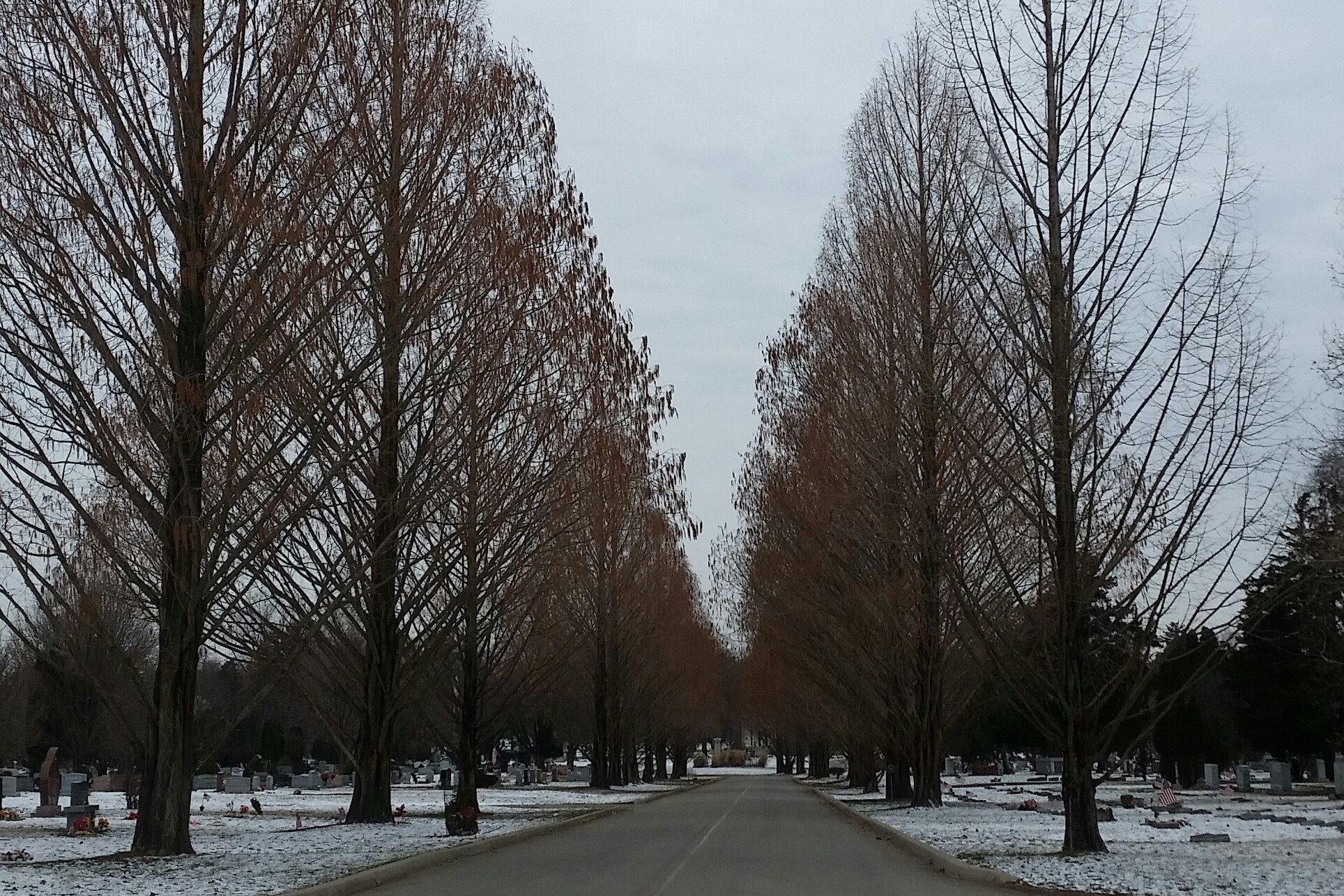In his 2010 book Cemeteries, author Keith Eggener “discusses the value of cemeteries as liminal space — space at the joining together of different states. They’re places where life meets death, nature meets city, present meets past. They offer a unique experience” (Williams, Tate. In the Garden Cemetery: The Revival of America’s First Urban Parks. American Forests. Spring/Summer 2014. http://www.americanforests.org/magazine/article/in-the-garden-cemetery-the-revival-of-americas-first-urban-parks/). Green Lawn Cemetery was founded in 1848 and was part of the rural cemetery movement, which placed cemeteries outside of cities and created park-like and peaceful spaces for visitors.
Randy Rogers has been on the Green Lawn Cemetery board of trustees since 2012. He is the board vice president of Ohio Ornithological Society and board president of Cedar Bog Nature Preserve. He retired after a 28 year career in the US Army, and he has a BS in Recreation and Wildlife from Ohio University.
According to Rogers, the board of Green Lawn Cemetery decided 20 years ago that GL would speak for the birds, and subsequently there has been a representative on the board who is dedicated to birds and the protection of their habitat. Rogers follows Dr. Bernie Master and Jim McCormac, who recruited him to be that representative.
“We often think about some piece of land to recover or preserve, and urban opportunities get lost,” Rogers said. The cemetery has native trees, large oaks and maples, buckeye, Wild Black Cherry. It needs more diversity of canopy to support the migrant birds that come through this Important Bird Area, a designation from national Audubon. Rogers said that there are too few Dogwood, Viburnum, and Hawthorns; if the quantities of these small and medium trees are increased, the diversity of species will increase. Over 280 bird species have been reported seen at Green Lawn.
Before Green Lawn Cemetery was developed, cows grazed in the mixed oak forest. Rogers said that the birds are at Green Lawn Cemetery because of the trees, which are remnant of the mixed oak forest that existed before the cemetery was established.
To improve the bird habitat at Green Lawn Cemetery, a tree inventory was needed. National Audubon supported the work in the IBA area by providing Green Lawn Cemetery with a license to use the Audubon mapping software. A City of Dublin forester and Audubon contractor Rick Franz led the effort with Rogers. They counted, measured, identified, and assessed every tree—regardless of size—in the developed 280 acres of Green Lawn Cemetery; the survey determined that there are 4,343 trees of 112 different species, of which approximately 60% are native.
“We still have a good remnant mix including Chestnut, Chinquapin, and White Oak. There’s also a good mix of Black and Sugar Maples on the ridge where the soil is drier. There are a number of “fad” trees, like Norway Maples and Spruces that replaced the native trees when they got older and died over the last 70 years,” according to Rogers.
The Audubon software enabled Rogers to create a model that shows that in 49 years, the last of the remnant forest could be gone. The model “rang the alarm bells” that Green Lawn would need to replant natives. The Board voted to start a canopy restoration program, and for the next five to seven years the organization would spend $15,000 per year to plant native mixed oak forest species. This will result in the planting of 150-200 trees each year.
“Retired OSU professor Daniel Struve is helping us grow new trees from seeds collected from current Green Lawn trees. He’s helping us with Black Maples especially and some oaks. The trees will be adapted to the soil and location,” said Rogers. “We use local nurseries. There’s also a nursery in Pennsylvania that specializes in hickories and hard-to-find trees. There are tall canopy trees here now, and we are working to mix in small- and medium-sized trees like dogwood and ironwood. The only hickory found is the Bitternut, and we are planting King (Shellbark) and Shagbark Hickories.”
A few single species were identified during mapping: European Weeping Beech, Blue Ash, and Black Ash. Only 14 invasive Callory, Bradford, and Cleveland Pear trees were mapped, along with specimens of the Tree-of-Heaven, an aptly-named tree for a cemetery but highly invasive. Rogers estimated that between 14-20 trees, usually older ones, are lost per year due to age, wind storms, and lightning strikes. The cemetery lost 179 ash trees due to the Emerald Ash Borer. The trees are taken down as they become hazardous and left standing to provide habitat for woodpeckers. Rogers said that he saw a Red-headed Woodpecker at Green Lawn for the first time and speculated that is due to the dead ash trees.
The goal is to have at least 12 to 15 trees per acre in all sections of the cemetery, which would meet the Branch Out Columbus program’s goals, said Rogers. The Cemetery is committed to remapping and revalidating 20% of its land so that every five years there is an updated survey.
To support Green Lawn Cemetery, contact jleeharris.greenlawncolumbus@gmail.com.

